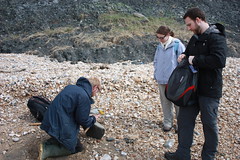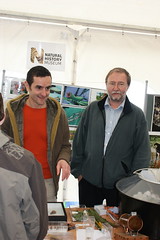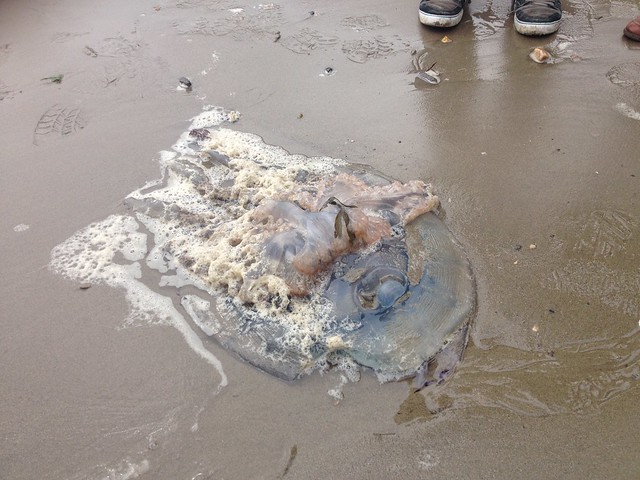I have been appallingly bad at keeping things up-to-date here, so this post comes from the distant past (the end of April this year could be a century ago in the blogosphere).
Lyme Regis is famous for its association with many fossils and fossil collectors. Among the collectors the most famous is
Mary Anning, whose
grave is in the village and can be visited (the organisers of the festival left a
wreath on her grave).

As an unofficial delegation to the
Fossil Festival (our frieds were more directly involved) we managed to spend a day collecting fossils with Phil from the
Charmouth Heritage Coast Centre (a friend of ours who used to work at the NHM).
Walking along the beach from Charmouth to Lyme Regis we collected various ammonites, belem
nites, a bivalve and what is (possibly) a fish skull.
Meanwhile in the marquee there was a hive of activity, stalls selling various fossils and minerals, art and craft activities for children, and a whole bunch of scientists and science educators from the NHM.

As well as various palaeontological activities Alessandro and Martin from the NHM's Entomology Department were there talking about insects alongside members of Butterfly Conservation.



